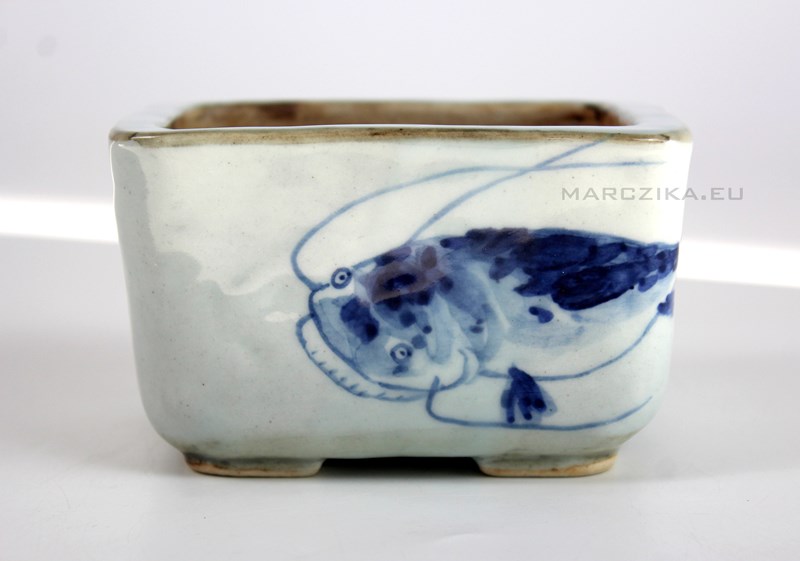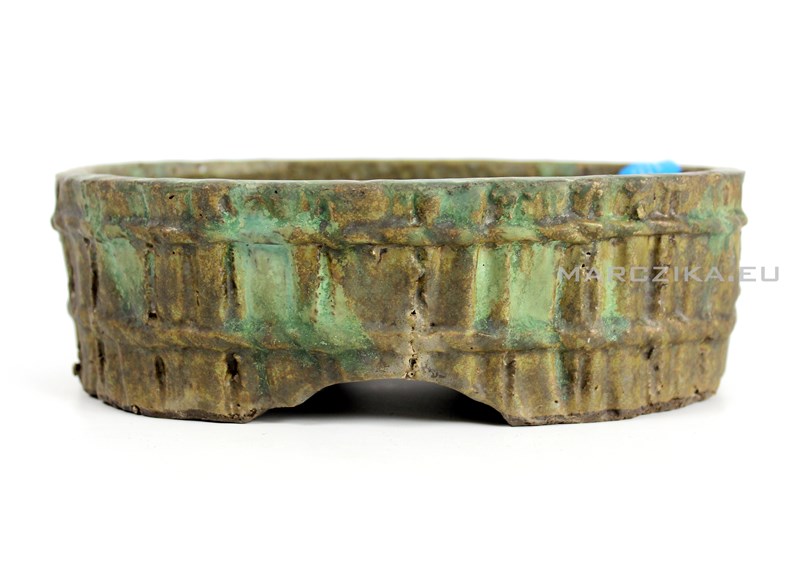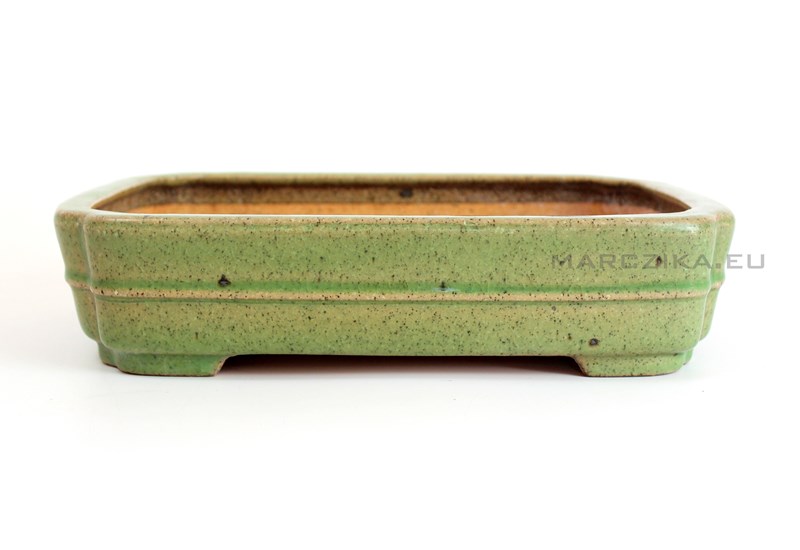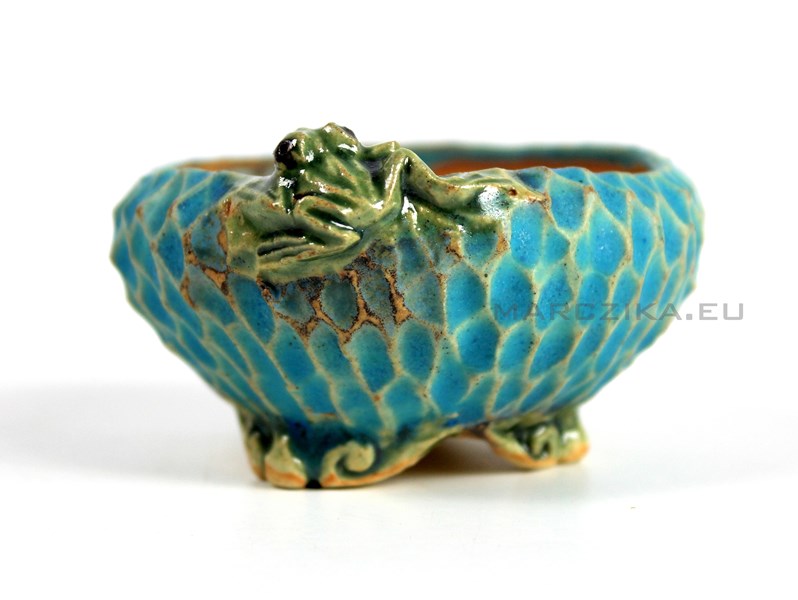Japanese bonsai bowls as real classics or unusual bonsai aesthetics in Hungary
Ten years ago, no one among Hungarian bonsai enthusiasts hoped that one day the aesthetics of the Japanese bonsai bowl would become available in Hungary just like anything we had seen in the highest quality bonsai magazines on recordings made in Japan at the time. Partly because of this, we have been thinking a lot in the past and now about what and how to plant and what the goal should be with choosing a bonsai bowl. Our offerings and collections lined up with plant masterpieces from Japan’s renowned bonsai gardens sooner than the recently arrived bonsai bowls. One by one, it is a great workshop, the lion's share of which bears the marks of famous creators and workshops (Satomi Terahata, Rei ho, Echizen Bunzan, Shun go, Shu ho, Yama fusa, Hattori, Yama aki, Ma zan, Kei yu, Kei zan, Sho ami, etc. ...). Our previous thoughts have long since been shattered and found a new medium in the ceramic culture of Asia, and this was necessary because Europe, with its redefined world of bonsai ceramics, had a hard time adapting to bonsai from the real old Japan. Fortunately, the dedicated colleagues at Marczika Bonsai Studio have been open-minded on their study trips to Asia and have learned a lot about this world in China, Taiwan and of course Japan. In part, this brought about the need to bring bonsai bowls worthy of the nobler bonsai from Japan, and once that was the case, we did so to have something to include in our web store’s offerings as well. Just as the former merchants imported the novelties of art for the citizens of Italy - thus enriching the art of the Renaissance - so we brought to Hungary from the curiosities of the bonsai culture only not novelties but rather older things. This is how the old becomes the novel and so the bonsai cradle has an effect on European bonsai culture.
Rei - ho, a classic Japanese bonsai bowl with a remarkable glaze
The Hungarian bonsai culture is barely beyond the path of three decades - "already" ripe to show itself and show up collectors, enthusiastic gardeners and creative talents for whom we can be proud of the concept of bonsai in Hungary. It is also partly due to them that the outlines of the conventions that arrived raw in the past have become clearer and the bonsai at home has grown pretty slowly to meet the expectations of Japanese bonsai bowls. Yes. The wording is intentional, because Asian bonsai bowls are certainly only partly designed according to aesthetic aspects - because, on the other hand, we can recognize these aspects along physiological and horticultural grounds. Think of proportions. Extremely important is the triple unity of the interior of the bowl, the ratio of the rootball to the root zone in relation to the height of the tree, which can be determined by the length of the bowl. If the proportions shift, it will show up in the condition of the tree quite quickly. But we don’t have to go that far to look at these works as works of art (as well) and understand that the bonsai bowl is not only a gardening foundation in the world of bonsai but also a pledge of art enjoyment.
What is unusual is the usual
The world of Japanese bonsai bowls has mostly infiltrated Hungary along the disciplined shapes and colors. However, there has always been a breakdown of form - of course, with restraint. Or, due to the nature of the handicraft, the elusive unusualness of the human handprint, either in the form of brush strokes on a hand-painted bowl or due to the individual idea of the pottery, a distorted form - think of nanban bowls... as natural as it is. Nowadays, stereotypes repeated to the point of boredom are increasingly eroding reality and it very much seems to be forced to improve the knowledge of bonsai society so far - as far as bonsai bowls are concerned. The great paradigms seem to stand and fall at the same time. This is because there are bonsai bowls that are true and there are some that are not or not so much. But what is it all about? A common view, for example, is that a bonsai bowl should not be too intense, ostentatious, and too artistic — because such a bowl will distract your bonsai. This is a good starting point, a good principle, but it is still there. By grouping large-leaved species or varieties, flowering and (larger) fruit-bearing trees, or variegated-leafed shrubs into separate categories, we have already opened the door to hand-painted and / or sometimes more rustic (arguably more artistic) bowls. Take the example of the two shohin bowls in the pictures now, for which it is not appropriate to say markers - let's find wood instead!
|
To - fuku - ji, a hand - painted fish depicting Japanese shohin bonsai pot |
Shu - ho, rustic Japanese shohin bonsai pot |
Don’t get me wrong, we don’t want to push bonsai bowls that represent more classic and clearer values into the background. Moreover ... These worlds do not extinguish each other, but strengthen them. This is also evidenced by a display of a bonsai of an ancient-old pine in a vehement unglazed and classically shaped bowl and the planting of a kusamono in a more irregular shohin bowl. Familiar? Of course, for these plantings to be beautiful, some sense of proportion and possibly knowledge of the golden ratio planting principle is required at least minimally. Basically, these things can be learned (relatively quickly) and you can quickly go through those unnecessary and often inhibitory innervations that, for example, kurama is modern ... it never was!
|
Yama - fusa, a classic bonsai pot with finely crafted legs |
Satomi Terahata, shohin bonsai pot with cracked glaze and striped pattern |
This can also be interesting:Close to the golden ratio - neagari bonsai on the stage!Close to the golden ratio - neagari bonsai on the stage! The neagari (exposed root) bonsai style is not a common phenomenon at exhibitions. Not so rare, but the appearance of Pseudocydonia chinensis in this post is practically not commonplace in this style. This is a nice collection piece from our bonsai studio, the latest incision we have noticed is that thanks to the work of the last few years we have come close to it with something interesting... READ MORE... |
Time and seasons teach you everything
Time. The basis of bonsai. It takes time not only for bonsai to develop but also for the taste of the bonsai gardener to noble. Mostly, classic bowls appear more and more in the collections of bonsai masters over time - of course, after that, the question rightly arises, what does it really mean to have a bonsai bowl as a classic? The so-called the color scheme of the glazes of classic Japanese bonsai bowls is always suitable to best suit the color for the particular season. You could say the best fusion is Japanese glazes with the seasonal foliage of bonsai or just its foliage.
|
Satomi Terahata, an ideal choice for bonsai with big fruit or a big root ball |
Yama - fusa, for bonsai trees with flowering and strong autumn foliage |
|
Hattori, a pot suitable for classic deciduous bonsai |
Shun - go, bowl with carved surface with figural representations |

.JPG)


.JPG)
.JPG)
.jpg)
.JPG)
.JPG)

.JPG)





0 hozzászólás